Research Article Open Access
Change in the Prevalence of Overweight and Obesity among School Children in Tebessa (Eastern Algeria) between 1995 and 2007
| Salima Taleb1*, Hayet Oulamara2 and Abdel Nacer Agli2 | |
| 1Faculty of Sciences of the natural sciences and life Laarbi Tebessi University Department SNV, Constantine Road, Tébessa 12000, Algeria | |
| 2Laboratory of Nutrition and Food Technology (LNTA) INATAA, Mentouri University, Constantine, Algeria | |
| Corresponding Author : | Salima Taleb Faculty of Sciences of the natural sciences and life Laarbi Tebessi University Department SNV Constantine Road, Tébessa 12000, Algeria E-mail: talebsalima@yahoo.fr |
| Received November 26, 2011; Accepted January 10, 2012; Published January 15, 2012 | |
| Citation: Taleb S, Oulamara H, Agli AN (2012) Change in the Prevalence of Overweight and Obesity among School Children in Tebessa (Eastern Algeria) between 1995 and 2007. J Obes Weig los Ther 2:109. doi:10.4172/2165-7904.1000109 | |
| Copyright: © 2012 Taleb S, et al. This is an open-access article distributed under the terms of the Creative Commons Attribution License, which permits unrestricted use, distribution, and reproduction in any medium, provided the original author and source are credited. | |
Visit for more related articles at Journal of Obesity & Weight Loss Therapy
Abstract
Background:The frequencies of the overweight and the obesity are in increase at the children in the world, what led the World Health Organization (WHO) to speak about real epidemic. The situation of Algeria is badly known until now. The main objective of the study was to esteem the distribution, in a population of children and teenagers schooled to Tébessa by the corpulence esteemed by the Body Mass Index (BMI).
Methods:All 4-13-year-old children attending public schools in the Commune of Tébessa were measured and weighed during a systematic health check at school from 1995 to 2007. BMI was calculated and plotted on standardized BMI for age tables, using the International Obesity Task Force (IOTF) references.
Result: The frequency of the overweight and obesity according to the references of the IOTF was estimated at 11.37 p hundred between 1995 and 2007. This prevalence passed from 17.39 % in 1995 /98 to 8.49 % in 2005 /2007. The older children from 10 to 13 years are the only ones which presented an evolution during this period. The girls are touched by obesity than the boys. Conversely the boys are touched slightly by the overweight than the girls. A significant decrease or in the prevalence of overweight and obesity was observed during this period in both boys and girls.
Conclusion: These observations from Tébessa, showing a reduction in obesity and overweight in among the girls and boy. However, follow-ups of the stoutness of the children are useful in order to prevent this epidemic.
| Keywords |
| Overweight; Obesity; Children; Body Mass Index; Prevalence |
| Introduction |
| In recent decades the prevalence of obesity and overweight has increased steadily in both developed and developing countries [1-4]. Obesity in youth has serious medium- and long-term consequences including endocrine, cardiovascular, renal, pulmonary, orthopedic and gastroenterological diseases [5,6]. Overweight and obese youths may also face psychological challenges resulting in harm to their self-image. |
| For the above reasons obesity and overweight have become a public health priority [7], particularly in school settings where the children affected may suffer stigmatisation and be confronted with learning difficulties [8]. |
| It is therefore of interest to have robust data on the prevalence of overweight and obesity in different parts Tébessa, to be able to monitor the effect of preventive interventions and/or regional variations. |
| Few longitudinal data collected in a systematic manner exist for school children in Algeria. Because of the potentially important role attributed to schools in the prevention of overweight and obesity [9], it is of interest to have data on its prevalence among children school. This may also allow better targeted prevention programs. |
| In order to estimate the prevalence and evolution of this outbreak, an epidemiological study was set up. The objective of this investigation is to determine the prevalence of overweight and obesity among school students in public schools of the City of Tebessa (Algeria) and to monitor overweight and obesity in the period 1995-2007. |
| Methodology |
| Tebessa in Algeria is located 20 kms from the border with Tunisia. There is a phosphate mine near to the city. The city has a population of around 161,440 people. The history of Tebessa dates back to the 7th century BC when it was a Numidian town. The city was also a part of the Roam Empire as was known as Theveste in the ancient period. In 1851 it has been occupied by the French. Under the name of Tebessa it became the capital of a canton, then an arrondissement of the départment of Constantine in Algeria, later, it became capital of an arrondissement in the department of Bône, now (1974) it is capital of a province of its own, bearing the same name. |
| This cross-sectional study, which took place in Tébessa, was carried out between February 2005 and May 2007. This study covered a representative sample of 4-13 years old Algerian children. 34 representative schools were selected reflecting the real distribution of the whole urban districts of the studied population. |
| All 4–13-year-old children (mean age 8.035 ± 2.37 yr.) educated in these schools in Tébessa were included in the study. A total of 21618 children (10691 girls and 10927 boys) were included over the 12-year period (1995–2007), thus making it possible to estimate the prevalence of overweight and obesity in Tébessa. |
| Interministerial Circular No. 01 of 04.06.1994 on the reorganization plan of school health has created Units Detection and Monitoring (UDS) dependent on both the Department of Health and Population,of Education and Interior and Local Government. This is to implement “a recovery plan based on improving the quality of services and level of health coverage in schools ... “. These units are located at schools and to include a medical office and medical staff (doctor, dentist) and paramedics. |
| All children and adolescent educated in public schools in Algeria underwent a health visit, during the first year of primary school, the first year of middle school and the first year of secondary education it is a government program. During this visit at the UDS the nurses questioned the child about health-related topics including vaccination, nutrition, exercise, wellbeing and integration. |
| For the purpose of the study, school nurses, weighed and measured all children and plotted their data on a weight to height and BMI curve [10]. Children were measured on regularly calibrated SECA balances (kg) and measured on either wallmounted or balance-mounted height scales (cm). Children were in their underclothes to measure weight and during inspiration for height. Anthropometric measurements are recorded on the books of children’s health.To carry out our study, we collected data (weight and height) placed on the health records of each child. A total of 16 primary schools, 10 colleges’ means and 08 secondary’s school were involved in this study. |
| This age was chosen for practical reasons and physiological. Indeed, after 6 years, obesity has greater predictive value of the status of the adult fat [11]. In addition, this age could be a good time to prevention strategies and therefore deserves a special interest. |
| For the presentation of our results, we have grouped some years in one class, because the amount of data collected for different years were not the same (lack of data on several health records), from which the distribution Next: 1995-1996-1997-1998 (1995/1998), (1999/2000), (2001/2002), (2003/2004), 2005-2006-2007 (2005/2007). |
| Statistics |
| Body mass index (BMI) for each child was calculated as weight in kilograms divided by height in meters squared (kg/m2) [2]. The proportions of overweight and obese children among the participants were determined according to the BMI by gender and age, regarding cut-off points, suggested by Col et al. [12], on the basis of the IOTF references [12]. These references are based on overweight outcome values (values equivalent to BMI over 25 kg/m2) and (under 30 kg/m2 of adults) and obesity (values equivalent to BMI, equal or over 30 kg/m2 of adults). The comparison between percentages was calculated using the chi2 test. |
| The software used for data entry and data processing are Excel 2000 and Minitab version 13. The Chi2 test was used for comparisons of frequencies. The significance level was set at 0.05 |
| Results |
| Using the IOTF references, the prevalence of overweight (obesity included) obesity and overweight in all age groups was 11.37%, 3% and 8.34% respectively. There was no significant gender effect on the prevalence of overweight including obesity (11.55% vs. 11.14% P + 0.333). The boys had a higher prevalence of overweight than the girls (8.73% vs. 7.94%, p = 0.034). However, the girls had a higher prevalence of obesity (3.2 % vs. 2.82% p = 0.033) (Figure1). |
| The prevalence of overweight, obesity and overweight including obesity tends to decreased significantly since 1995 (Figure 2). Between 1995-1998 and 2005-2007, there were a significant changes among children in the prevalence of overweight including obesity (17.39 % vs 8.49 % p = 0.0001), obesity (4.84 % vs 1.8 % p = 0.0001) and overweight (12.55 % vs 6.38 % p = 0.0001). |
| The prevalence of obesity among girls decreased from 5.2% in 1995/98 to 1.78% in 2005/2007 (p = 0.0001). The peak prevalence of obesity is observed in 1995/98. Among boys the prevalence of obesity decreased from 4.5% in 1995/98 to 1.83% in 2005/2007 (p = 0.0001). The peak prevalence is observed from 1995 to 1998 (Figure 3). |
| The highest prevalence of overweight and obesity are observed in the age group of 4 to 5 years. The minimum prevalence of overweight was observed at the age of 7 years (7.03%) while the minimum prevalence of obesity alone (2.27%) and that of overweight including obesity (9.46%) are observed in the slice age 8-9 years (Figure 4). |
| The prevalence of obesity is higher among boys in age groups 4 -5 years and 10-13 years, but the difference is significant only for age group 4-5 years (p = 0.028). Among girls the prevalence of obesity is higher than for boys age 6 years (p = 0.0001) and 8 -9 years (p = 0.037). For the age group 7 years the prevalence of obesity was similar between the two groups (Figure 5). |
| Discussion |
| It has been shown that the BMI is the most valid indirect indicator of adiposity in children, adolescent and adults. [13,14]. The accepted BMI of 25 for overweight and 30 for obesity in adults is used to provide cutoff points at younger ages. However, the BMI is now generally accepted to be used to define obesity in children and adolescents clinically. Many specific BMI values for age and gender have been published [15]. |
| Despite worrying international trends in childhood overweight and obesity [7,16], our study showed no further rise in the prevalence of overweight and obesity between 1995 and 2007 in 4-13 yearold children living in the commune of Tébessa (according Cole’s references). On the contrary, a significant decrease in overweight and obesity was observed after 1995. |
| Few studies have reported on the prevalence of obesity amongst children in developing countries in which it has reached epidemic proportions [17]. In Algeria, representative nationwide studies on the prevalence of overweight and obese children are not available yet. The reported prevalence was 4.89% for overweight and 1.42% for obesity in Tébessa (Algeria) [18]. On the other hand, the prevalence of overweight and obesity in Khroub (Algeria) was 10.9% and 4.0%, respectively [19]. To the west of Algeria (Sidi-bel-Abbès), one study has been achieved during 2007 in 13 to 18 year old adolescents. It showed that the prevalence of overweight including obesity was 8.3% according to the IOTF references [20]. Another study showed that the overall prevalence of overweight and obesity was 7.94% and 3.73%, respectively according to the IOTF references. |
| Compared to some other studies from southern Europe, our data tend to show relatively lower levels of overweight and obesity [21]. However, when comparing our data with the data collected on whole population samples of similar-age children in the country of Great Britain [22], and Northern Europe where the prevalence of overweight is 10-20% [23]. The trend and the values are close and seem to confirm the trend in large Algeria. It must be borne in mind that the prevalence of overweight and obesity may vary between different geographical areas and between urban and rural areas. Our results seem lower than those observed in Tunisia [24] and Morocco [25]. In a similar study carried out in Switzerland obesity levels in both boys and girls were relatively similar to those found in our 4–13-year-old children (boys: 3.5 vs. 3.8%, girls: 3.8 vs. 2.8%) but the prevalence of overweight was considerably higher in their group of 5-6-year-old children (boys: 8.6 vs. 20.5%, girls: 12 vs. 19.2%) [26].This could be due to the increasing prevalence of obesity and overweight among preschool children. |
| Our data also corroborate results found in Tébessa 5-8-yearold children from the eastern area, where a similar decrease in the prevalence of overweight and obesity was shown between 1998-2005 [10]. In Algeria in a study to Tebessa, with 3396 children aged 5 to 8 years, the decrease in the prevalence of overweight and obesity was lower than that of this work. The prevalence of obesity decreased from 1.06% in 1998 to 0.72% in 2005, the prevalence of overweight decreased from 6.38% in 1998 to 5.08% in 2005 [27]. However according to a study in Constantine (eastern Algeria) in children aged 5 to 18 years, the prevalence of overweight including obesity increased from 8.27% in 1996/98 to 10.12% in 2004, the prevalence of obesity increased from 1.26% to 1.88 p. percent [28]. This can be explained by the fact that the city of Constantine is a large city more urbanized than Tébessa. These variations in the prevalence rates found in different countries worldwide and in different ethnic groups may certainly be due to environmental factors such as diet, physical activity, etc., which are the major contributors to increased overweight and obesity prevalence in children and adults [29]. |
| Some reports from Turkey and Taiwan showed higher rates in boys than girls in the urban setting [30,31]. On the other hand, results from Saudi Arabia and Kuwait showed the opposite trend [32,33]. In the West of Algeria a study found, in this urban studied population, higher rates of overweight among girls. Conversely, obesity was increased in boys using the IOTF. We found in this urban study population higher rates of obesity among girls. Conversely, overweight was higher in boys using the IOTF. |
| Since the country is facing the difficult socio-economic and political structures in place of school health should allow regular analysis of surveillance data growth performed routinely in all schools in Algeria and therefore measures anthropometric must be systematically identified. Epidemiological data of childhood obesity in our country are not well known until today, but their existence in many parts of the country requires early detection for better care and a policy of prevention from childhood to reduce the burden of disease in adulthood. The prevalence of childhood overweight and obesity is increasing in the developing countries and Algeria doesn’t escape from this scourge. |
| Conclusion |
| In conclusion, the data collected between 1995 and 2007 among 21618,4–13 year old children in Tébessa (Eastern Algeria) show a significant decrease in the prevalence of obesity and overweight Coles’s [12]. This finding do not corroborates findings in other cities in Algeria; Tébessa may be among the first signs of a changing trend in obesity and overweight. The relatively high level of obesity and overweight at 4 years of age, however, merits special attention to early childhood, in that 17.84% of children already fall into the O and OW groups. Even if no clear conclusions can be drawn as to the reasons for this change, it is probable that both environmental and individual factors contribute to influencing people’s behavior. An intriguing finding was the concomitant drop in obesity and overweight in Tébessa between 1995 and 2007. |
| We recall that obesity is directly responsible for the appearance of a long series of medical and psychological complications that justify a policy of active prevention, targeted early. And annual monitoring of changes in body mass index compared with the BMI curve of the health record, and especially before 6 years to identify the onset of adiposity rebound, is an urgent task to implement. |
References
- Jackson-Leach R, Lobstein T (2006) Estimated burden of paediatric obesity and co-morbidities in Europe. Part 1. The increase in the prevalence of child obesity in Europe is itself increasing. Int J Pediatr Obes 1: 26-32.
- Lobstein T, Jackson-Leach R (2006) Estimated burden of paediatric obesity and co-morbidities in Europe. Part 2. Numbers of children with indicators of obesity-related disease. Int J Pediatr Obes 1: 33-41.
- Ogden CL, Carroll MD, Flegal KM (2008) High body mass index for age among US children and adolescents, 2003-2006. JAMA 299: 2401-2405.
- Pomerleau J, McKee M, Lobstein T, Knai C (2003) The burden of disease attributable to nutrition in Europe. Public Health Nutr 6: 453-461.
- Singhal A (2005) Endothelial dysfunction: role in obesity-related disorders and the early origins of CVD. Proc Nutr Soc 64: 15-22.
- Field AE, Cook NR, Gillman MW (2005) Weight status in childhood as a predictor of becoming overweight or hypertensive in early adulthood. Obes Res 13: 163-169.
- Hedley AA, Ogden CL, Johnson CL, Carroll MD, Curtin LR, et al. (2004) Prevalence of overweight and obesity among US children, adolescents, and adults, 1999-2002. JAMA 291: 2847-2850.
- Viguié M, Fayard M, Micheletti P, Boussuges S (2002) Prevalence of obesity amount elementary school children in Grenoble. Sante Publique 14: 361-370.
- Davis MM, Gance-Cleveland B, Hassink S, Johnson R, Paradis G, et al. (2007) Recommendations for prevention of childhood obesity. Pediatrics 120: S229-S253.
- Dayer-Métroz M, Mermillod B, Pampallona S, Schopfer C (1995) Croissance somatique de 2 a 18 ans - courbes genevoises 1995 - etude transversale. Service Sante de la Jeunesse, Geneve.
- Rolland-Cachera MF, Deheeger M, Bellisle F, Sempé M, Guilloud-Bataille M, et al. (1984) Adiposity rebound in children: a simple indicator for predicting obesity. Am J Clin Nutr 39: 129-135.
- Cole T, Bellizi MC, Flegal KM, Dietz WH (2000) Establishing a standard definition for child overweight and obesity worldwide: international survey. BMJ 320: 1240-1243.
- James J, Thomas P, Cavan D, Kerr D (2004) Preventing childhood obesity by reducing consumption of carbonated drinks: Cluster randomized controlled trial. BMJ 328: 1237.
- Waters E, Swinburn B, Seidell J, Uauy R (2010) Preventing childhood obesity: Evidence policy and practice. Singapore: Wiley-Blakwell Ltd.
- Fredriks AM, Van Buuren S, Jeurissen SE, Dekker FW, Verloove-Vanhorick SP, et al. (2003) Height, weight, body mass index and pubertal development reference values for children of Turkish origin in the Netherlands. Eur J Pediatr 162: 788-793.
- Seidell JC (1995) Obesity in Europe: scaling an epidemic. Int J Obes Relat Metab Disord 19: 1-4.
- Popkin BM, Doak CM (1998) The obesity epidemic is a worldwide phenomenon. Nutr Rev 56: 106-114.
- Taleb S, Oulamara H, Agli AN (2010) Prevalence of overweight and obesity in schoolchildren in Tebessa (Algeria) between 1998 and 2005. East Mediterr Health J 16: 746-751.
- Mekhancha-Dahel CC, Mekhancha DE, Bahchachi N, Benatallah L, Nezzal L (2005) Overweight, obesity: signs of nutritional transition in children and adolescents in Khroub, Algeria. Rev Epidemiol Sante Publique 53: 569-573.
- Bradai S, Allal IO, Merbouh MA, Soulimane A (2008) Prévalence du surpoids et de l'obésité chez les enfants et les adolescents scolarisés dans la wilaya de Sidi Bel Abbes. Rev Epidemiol Sante Publique 56: 310.
- WHO (2006) The challenge of obesity in the European Region of WHO and control strategies EUR/06/5062700/6 European Ministerial Conference on the WHO's fight against obesity. Istanbul, Turkey.
- Chinn S, Rona RJ (2001) Prevalence and trends in overweight and obesity in three cross sectional studies of British children, 1974-94. BMJ 322: 24 -26.
- Lobstein T, Baur L, Uauy R; IASO (2004) Obesity in children and young people: a crisis in public health. Obes Rev 5: 4-104.
- Ben Slama F, Achour N (2010) The childhood obesity in Tunisia and the World. CNOM (National Order of Doctors of Tunisia (2007)).
- Ouzennou N, Baali A, Amor-Sausse Roville H (2003) Eating behavior and obesity in infants of the city of Marrakech (Morocco). Biometrics and human anthropology. Ed SBH -Tome 21, numbers 1-2.
- Jeannot E, Mahler P, Duperrex O, Chastonay P (2010) Evolution of overweight and obesity among 5-6-year-old schoolchildren in Geneva. Swiss Medical Weekly 140: w13040.
- Taleb S, Oulamara H, Agli AN (2007) Variation in the prevalence of overweight and obesity among school children in Tébessa between 1998 and 2005. Scientific Forum of Nutrition and Food Technology, Constantine 12 and November 13.
- Oulamara H (2006) Obesity and overweight schoolchildren in Constantine 1996-2004, risk factors associated with Constantine and Jijel. PhD Thesis State University of Constantine, pp. 244.
- Khaled MB, Diaf M (2011) Prevalence of overweight and obesity in 8to 15year-old children in Sidi-bel-Abbes, Algeria. Pediatr Res 70: 383.
- Simsek E, Akpinar S, Bahcebasi T, Senses DA, Kocabay K (2008) The prevalence of overweight and obese children aged 6-17 years in the West Black Sea region of Turkey. Int J Clin Pract 7: 1033-1038.
- Chu NF (2001) Prevalence and trends of obesity among in Taiwan -the Taipei children heart study. Int J Obes Relat Metab Disord 2: 170-176.
- EL-Hazmi MA, Warsy AS (2002) A comparative study of prevalence of overweight and obesity in children in different provinces of Saudi Arabia. J Trop Pediatr 3: 172-177.
- Amine EK, Al-Awadi FA (1996) Nutritional status surveys of preschool children in Kuwait. East Mediterr Health J 2: 386-395.
Figures at a glance
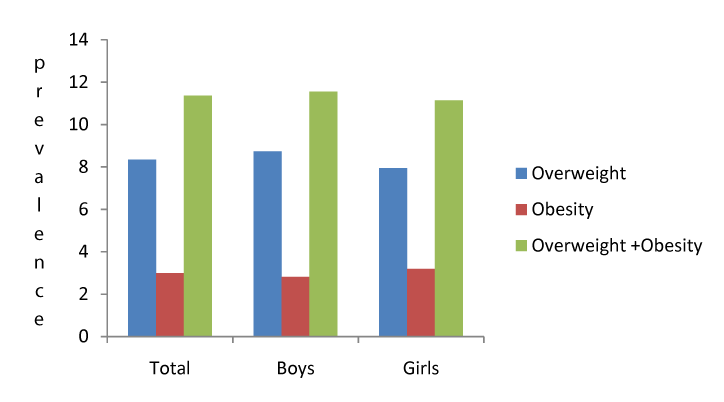 |
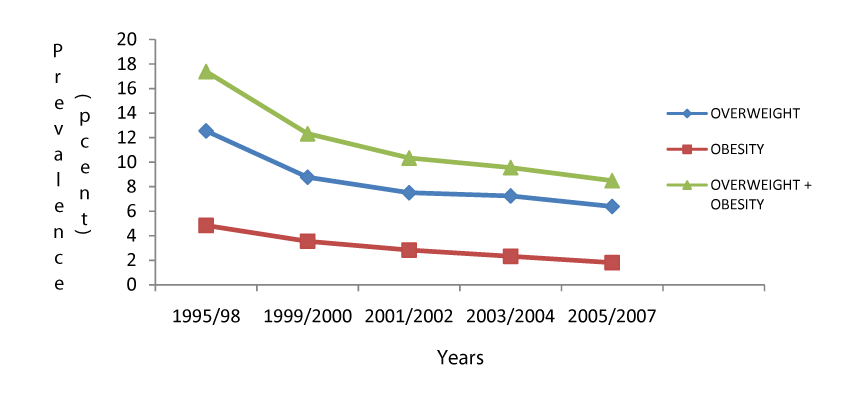 |
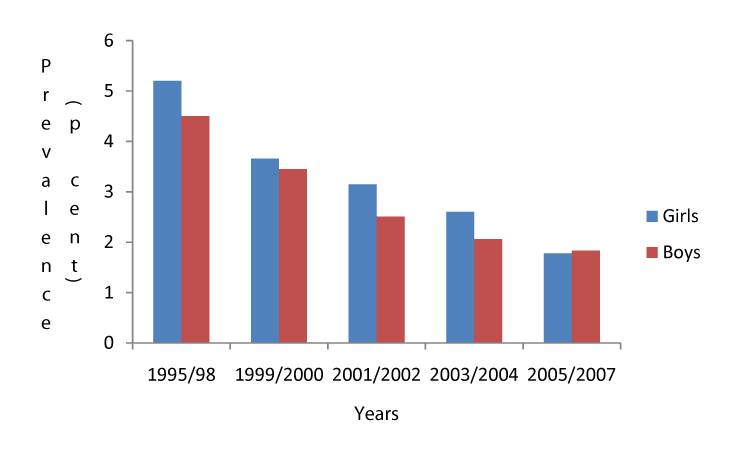 |
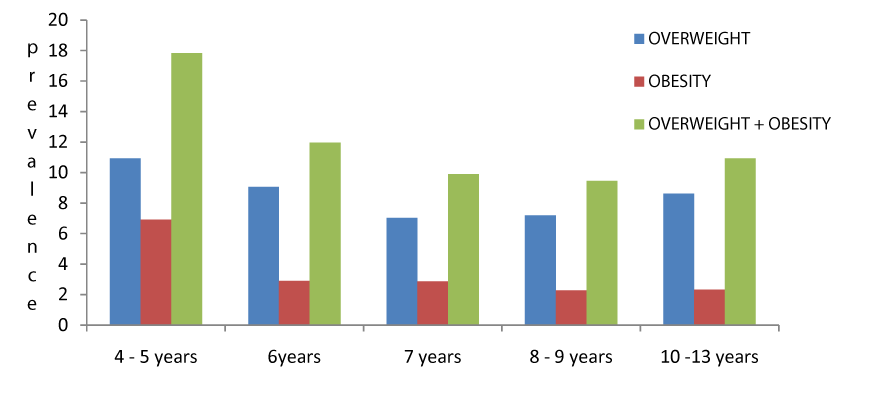 |
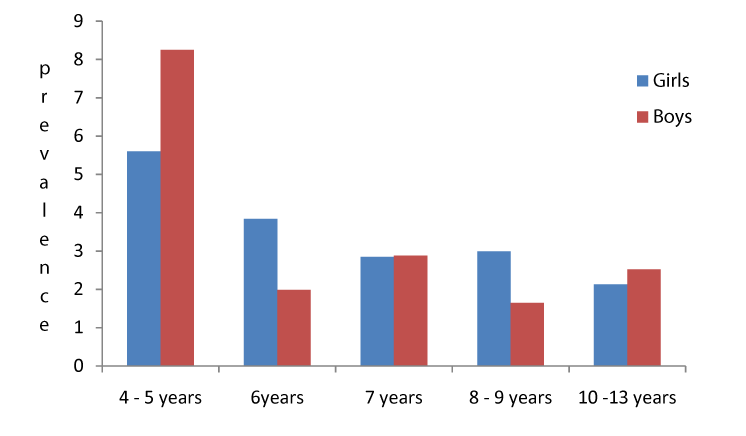 |
| Figure 1 | Figure 2 | Figure 3 | Figure 4 | Figure 5 |
Relevant Topics
- Android Obesity
- Anti Obesity Medication
- Bariatric Surgery
- Best Ways to Lose Weight
- Body Mass Index (BMI)
- Child Obesity Statistics
- Comorbidities of Obesity
- Diabetes and Obesity
- Diabetic Diet
- Diet
- Etiology of Obesity
- Exogenous Obesity
- Fat Burning Foods
- Gastric By-pass Surgery
- Genetics of Obesity
- Global Obesity Statistics
- Gynoid Obesity
- Junk Food and Childhood Obesity
- Obesity
- Obesity and Cancer
- Obesity and Nutrition
- Obesity and Sleep Apnea
- Obesity Complications
- Obesity in Pregnancy
- Obesity in United States
- Visceral Obesity
- Weight Loss
- Weight Loss Clinics
- Weight Loss Supplements
- Weight Management Programs
Recommended Journals
Article Tools
Article Usage
- Total views: 14339
- [From(publication date):
January-2012 - Aug 29, 2025] - Breakdown by view type
- HTML page views : 9705
- PDF downloads : 4634
